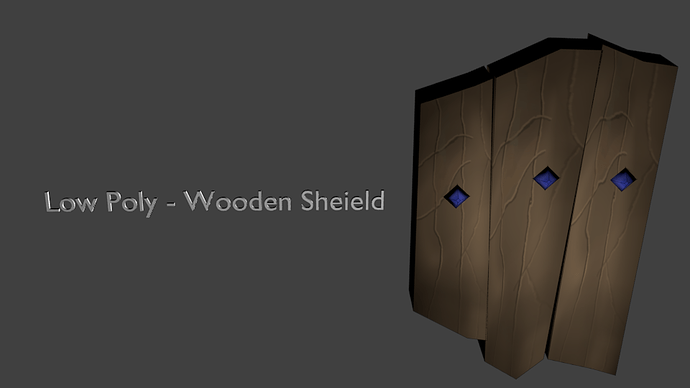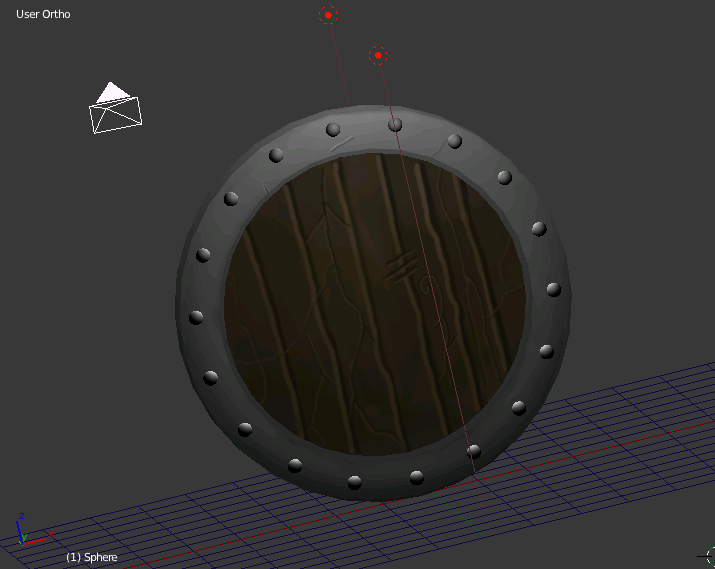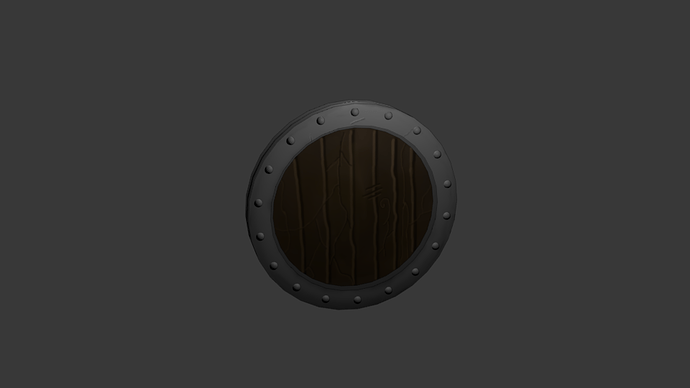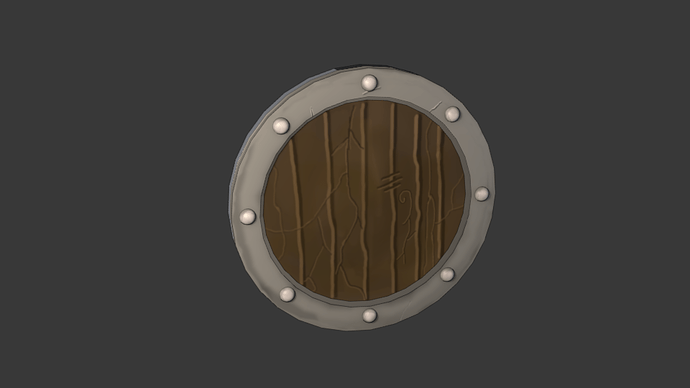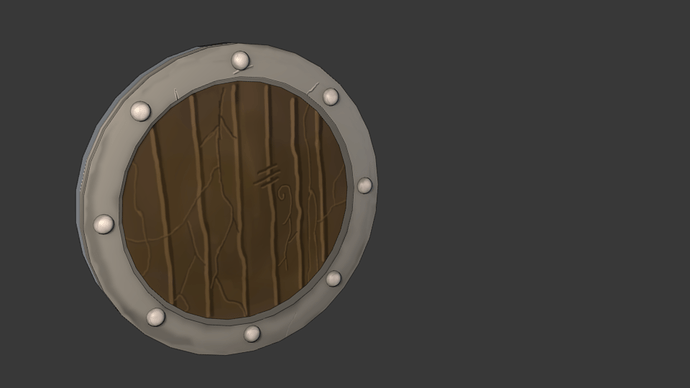Second or some attempt at hand painting textures onto somewhat low poly models. I’m trying to achieve the art style that the Game World of Warcraft applies to their models. I’m probably mileeeees off from reaching that standard but it would help if you guys could point me in the right direction and tell me what I’ve done right/wrong! Thank you
I would do it like so:
start by making a two tone base with the airbrush resembling a vertical sand dune pattern, but not too detailed.
add a new layer, and use a bristle brush with a slightly lighter tone to make some texture in a roughly vertical direction
add another layer and go in with a fine brush set to black, and draw in the cracks between the boards and other cracks, or gouges.
add one more layer, and go in with a much lighter wood tone, and a fine brush, and draw in some vertically oriented highlights, especially along the edges of your dark cracks.
I would suggest not making any horizontal type lines, except on the outer edges of the shield where the cross grain would be visible.
(edit) I just noticed that your boards are actually individual boards, so no need to paint in the cracks between the boards I guess.
(edit) also, set the black layer to multiply and reduce opacity.
Sheield -e=Sheild
Shield 3D
Shield Render
Here’s another attempt i made at a more realistic looking shield! Have i improved at all from last time?
Some Updates! got round to somewhat texturing the rims around the shield and changed the lighting a little!
there is a problem, that the real world lighting doesn’t match the painted lighting, so how about painting the diffuse texture without the highlights, and then painting a separate normals texture to get the feeling of grooves. If you have never painted a normals map before, it’s not too hard. just paint it light where you want the grooves to be, and dark where you want it to appear raised. a lot of people do it opposite of that and then invert the value, just because it’s more intuitive. It also allows you to use that texture as a diffuse texture to accentuate the crevices, in which case you would want to set the blending mode to multiply. Another way to approach the problem would be to not use real world lighting at all, and just paint in all the shadows, and set to shadeless.
